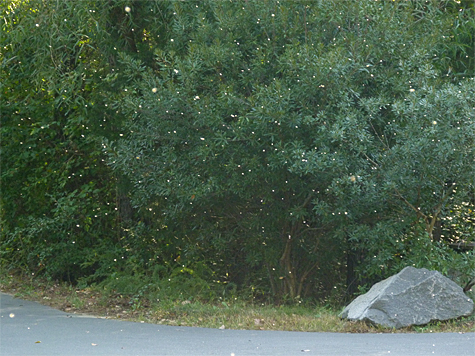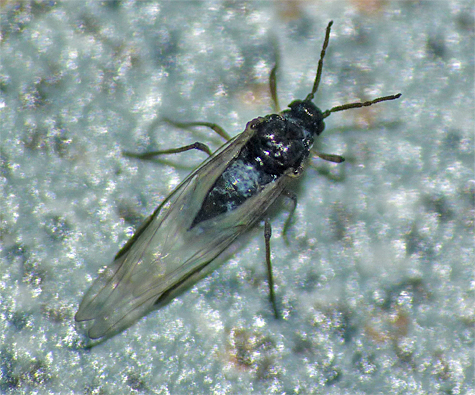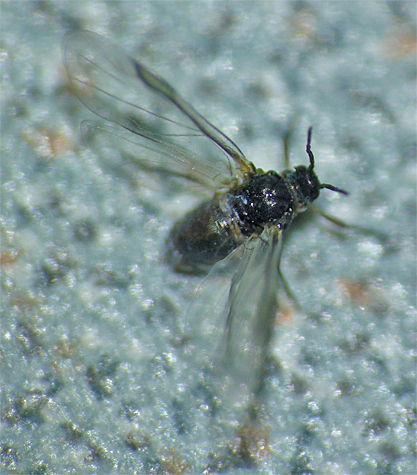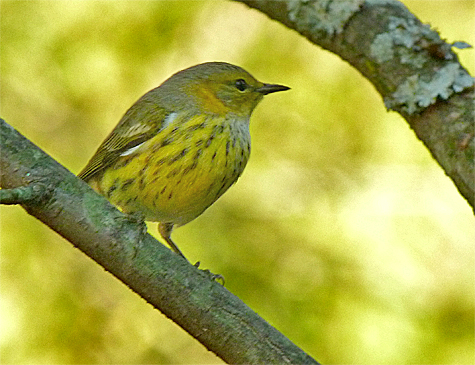What do aphids have to do with Cape May?
Well, if you’ve been down in Explore the Wild lately, especially in late afternoon when the sun hangs low in the sky, you may have noticed a swarm of tiny insects buzzing along the path. They are very small, but backlit against the low sun they’re quite visible. You may have walked right through them, waving your hand in front of your face to brush them aside as you walked.
In the past, when I was asked what they were, I usually came back with gnats, midges, or some kind of fly, but I didn’t really know what they were. And, I figured that the swarming had something to do with mating, it often does.

Standing in Explore the Wild watching the swarms last Tuesday (10/5/11), I determined that it was time that I find out the source of the hordes. I caught some of the little fliers in a plastic vial and had a closer look. Under magnification I could see that they had four wings. Right away, the four wings eliminated the possibilty of the insects being any kind of true fly, flies have two wings.
Thumbing through an insect identification book that I keep close by during the warm months (and not very far away during the cold ones), the closest that I could come to identifying these little guys was a sawfly. I’ve never heard of a sawfly swarm before but there’s many things in this world that I’m not aware, so I figured, why not.
After consulting some of the Butterfly House staff, Richard Stickney suggested that the insects were some sort of aphid. I, however, was still stuck on sawfly.
I took a bunch of close-up photos and submitted a few to BugGuide.net. Very soon after uploading the photos, an answer arrived. It turns out that the swarms are made up of aphids. The folks who monitor Bug Guide placed the little swarming critters in the subfamily Eriosomatinae in the Aphididae family. In other words, they’re some kind of aphid which probably emerged from the elm trees nearby.


I assumed that the mass of insects had come from the numerous willows since I often see birds foraging on the willows during both spring and fall migrations, the birds are feasting on something in those trees. The willows are loaded with mite galls, why not sawflies or aphids.
Elms seem the more likely source of the hordes though, since the swarms are just as thick, if not thicker, up and away from the Wetlands in Catch the Wind where there are no willows.
So, what do aphids have to do with Cape May? While I watched the aphids swarming over the path down in Explore the Wild I saw a small bird fly out from a elm branch at the edge of the Wetlands. There were four, maybe five of these birds working their way through the trees along the edge of the water, flying out from the branches, flycatching. They were warblers and they were eating the sawflies, I mean aphids.
What were these warblers? At least three of them were Cape May Warblers. They were the first Cape May Warblers that I had seen here at the Museum.

By the way, the name Cape May Warbler comes from the fact that this bird, the species, was first described from a specimen taken in a swamp in Cape May County, NJ. The species migrates through but does not breed in Cape May.
Here’s what they look like when they’re headed north in spring. Photo by Bill Majoros.